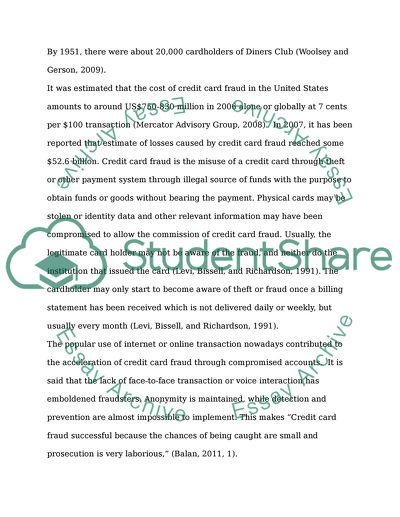Cite this document
(“Credit Card Fraud in the UK Research Paper Example | Topics and Well Written Essays - 1750 words - 1”, n.d.)
Retrieved from https://studentshare.org/law/1439432-credit-card-fraud
Retrieved from https://studentshare.org/law/1439432-credit-card-fraud
(Credit Card Fraud in the UK Research Paper Example | Topics and Well Written Essays - 1750 Words - 1)
https://studentshare.org/law/1439432-credit-card-fraud.
https://studentshare.org/law/1439432-credit-card-fraud.
“Credit Card Fraud in the UK Research Paper Example | Topics and Well Written Essays - 1750 Words - 1”, n.d. https://studentshare.org/law/1439432-credit-card-fraud.


